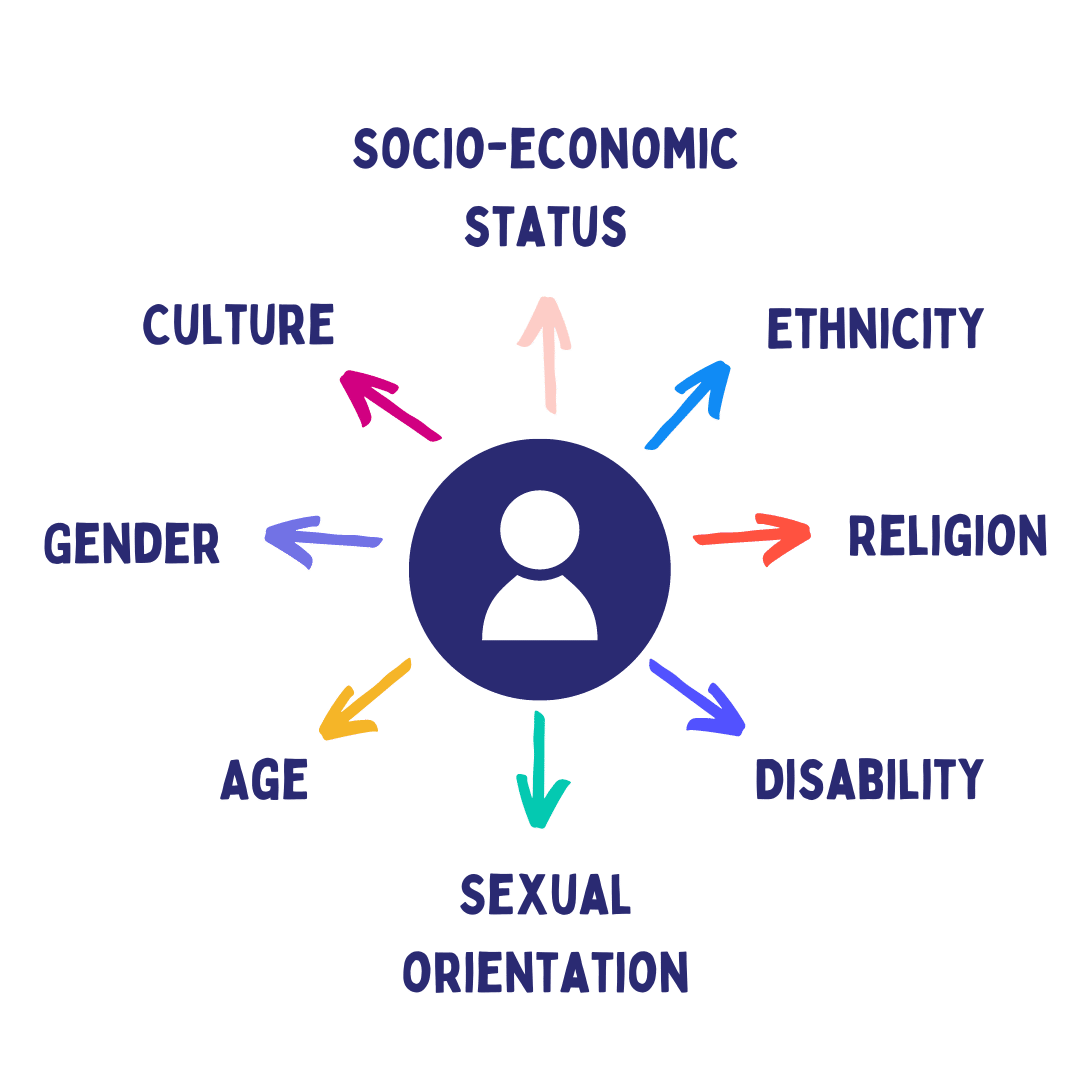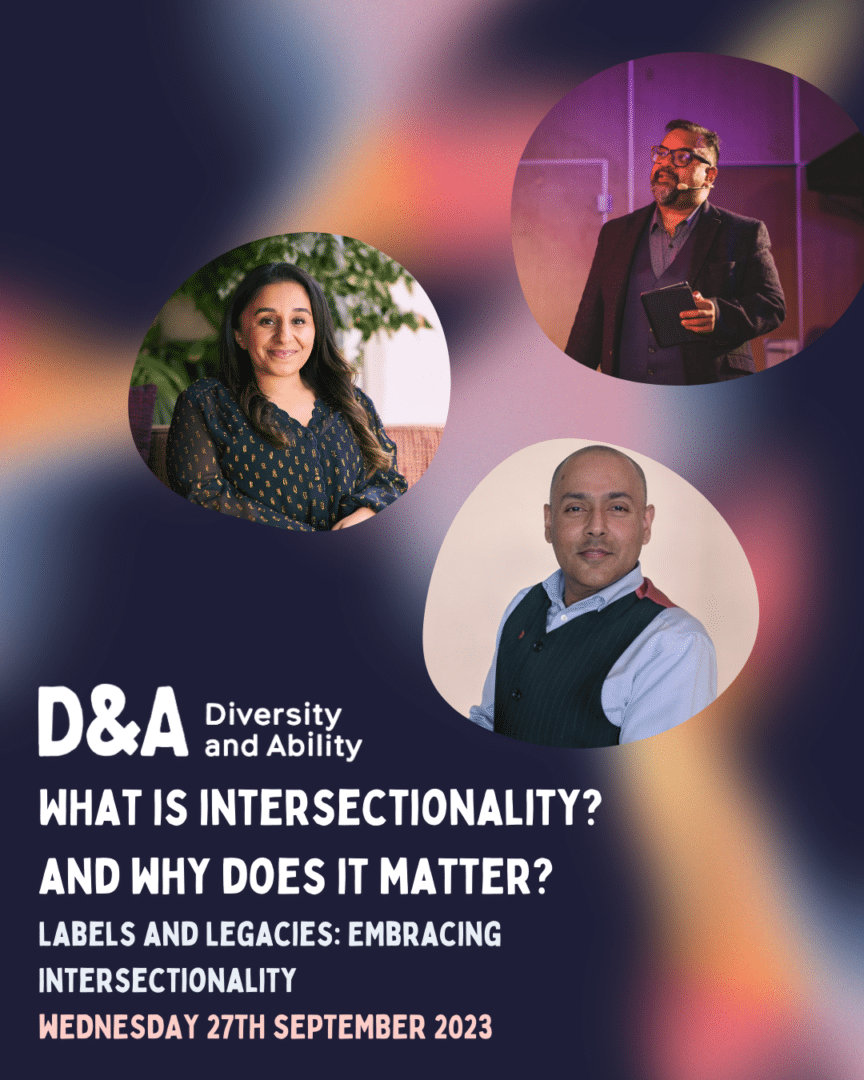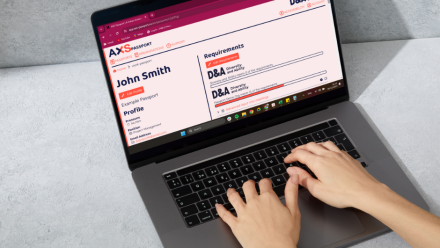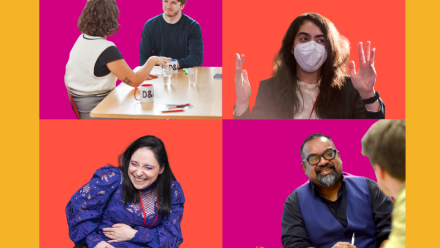What is intersectionality? And why does it matter in the workplace?
21st September 2023 by Ellie Thompson
Intersectionality isn’t a buzzword. Understanding intersectionality and its impacts is the only way to achieve authentic equity, diversity and inclusion (EDI).
Language is constantly changing, especially when it comes to inclusion. Remember the days of talking about ‘diversity’, before we recognised the importance of ‘inclusion’? And what about when the ‘E’ in EDI stood for ‘equality’ not ‘equity’?
This evolution is a good thing. Societally, our perspective expands as we continue to learn how to create spaces that welcome diversity and include everyone. Adding intersectionality to our vocabulary is vital, as long as we don’t stop there. We need to make practical changes to make our workplaces intersectionally inclusive. So, what does this look like?
Where did intersectionality come from?
The term was coined by legal scholar Kimberlé Crenshaw to describe how different aspects of our identity overlap and interact to shape our experiences and the opportunities we’re awarded. Crenshaw talked about how she, as a Black woman, faced a unique set of barriers that weren’t presented to either white women, or Black men, because the “intersectional experience is greater than the sum of racism and sexism.” (Crenshaw, 1989)
As a disabled persons’ organisation, we’re well aware of what happens when you add another aspect of identity into the mix: disability and neurodiversity. Marcia, whose book Black, Brilliant and Dyslexic explores the lived experience of Black neurodiverse people, says: “I am a black woman with dyslexia… I share a commonality with many black people but I am still an individual. The notion of ‘multiple identity’ resonates strongly with me.”
Although its origins lie in an academic context, intersectionality is a crucial framework for our approach to equity, diversity and inclusion in the workplace. Fostering an environment that respects and welcomes diversity isn’t just a moral imperative or a legal requirement; it’s a strategic imperative and workplaces are stronger for it. (Want to know why? Read our outline of why EDI is a necessity for business success in our blog).
What intersectionality means
Intersectionality provides us with a lens to understand that identities, and the marginalisation we experience, are complex and multifaceted.
While workplaces may be embracing diversity and inclusion – at least on paper – approaches to EDI tend to be segmented into different ‘strands’ of diversity. As an organisation led by, and for, disabled people, we’re always hearing lines like “we’re focusing on women this year”, or “we need to prioritise attracting more LGBTQ+ staff”. But this approach doesn’t acknowledge the overlapping intersectional realities of our experiences.
What is intersectionality in the workplace?
Although intersectionality has its origins in an academic context, it’s something that we see play out in our working lives. Equal Pay Day usually happens in around November, to mark the day on which the average woman stops earning relative to the average man. But for Women of Colour, Equal Pay Day is markedly earlier in the year; findings from last year showed that Equal Pay Day for Black African women was 27th September, and for Pakistani women was 8th September. And, what’s more, research has found that ethnicity pay gaps become larger when disability is an added factor.
But intersectionality is about so much more than our payslips. Every moment we spend in the workplace is impacted by the intersectional barriers we may face. The problem with attempting to segment EDI into different identity characteristics? You end up actively excluding people who have multiple, diverse aspects to their identities.
If your ‘women in business’ networking events are centred around alcohol, you’re excluding those who don’t or can’t drink because of their faith, disability or mental health.
If your BME employee group only meets in-person, you’re excluding your BME staff who may find in-person meetings inaccessible, who have caring or parenting responsibilities, or who have flexible working arrangements.
How can we make workplaces more intersectional?
1: Understand the intersectional barriers
Our experiences, stories and journeys are all unique. Acknowledge the different barriers presented to people who are LGBTQIA+, Disabled, Black or Brown, women, and/or hold other marginalised identity characteristics. Don’t address these barriers in siloes, but holistically approach EDI, considering and supporting all the intersecting attributes we hold.

2: Prioritise psychological safety
Even if you’re making space to discuss intersectional barriers, your employees may not feel safe to share all the aspects of themselves in the workplace. This is what we call psychological safety: the belief that you won’t be shamed, punished or humiliated for being ‘different’ and expressing yourself, speaking up with ideas, asking questions, sharing concerns, or making mistakes.
Atif Choudhury, CEO of Diversity and Ability, reflects on his own experience navigating multiple ‘differences’: “If you have to do more in the workplace to get further in the workplace, then you’re hard-wired to share less in the same workplace.”
Many people who experience marginalisation in the workplace won’t feel the psychological safety necessary to discuss the barriers they face. This could relate to:
- Previous negative (or even traumatic) experiences of sharing their needs at work.
- Societal stigma associated with particular labels, especially where they intersect with other aspects of identity (for example, women who are autistic).
- Self-advocacy burnout. It’s a fatiguing burden having to consistently advocate for your access needs to be met. Individuals may not always have the energy to discuss the barriers they face.
- Knowing what the barriers are. Not everyone understands that they’re facing barriers, or that they can be removed.
Establishing psychological safety takes time, effort, and patience. It requires the undoing of previous exclusionary practices, and encouraging individuals to unlearn the notion that the workplace isn’t designed to include them.
3: Break down the barriers before people face them
Societally, our approaches to inclusion and justice are often reactionary. We see this on both a global and granular level, from the way organisations created anti-racism strategies following the growth of the Black Lives Matter movement in 2020, to the trend of corporations establishing gender equality processes following accusations of discrimination.
Switching gears to an anticipatory approach is crucial to fostering a sense of belonging, inclusion and psychological safety for all employees.
This means making your EDI policies and practices explicit and proactive, for example:
- Modelling psychological safety as a leader by discussing your own access needs and identity in the workplace.
- Creating intersectional staff networks where Employee Resource Groups don’t work in isolated siloes, but collaborate and integrate.
- Engaging in training programmes that support leaders and employees to unlearn biases and open their eyes to the exclusionary barriers in their environments.
Encouraging everyone to share their access needs from the very beginning of the recruitment process. We’ve created a new, digital tool that shares individuals’ access needs, ensuring everyone feels welcomed and included: AXS Passport.
Don’t let your actions end here.
True inclusion requires a sustained investment. Want to keep the conversation going?Join Atif Choudhury (CEO of Diversity and Ability) for Labels and Legacies: Embracing Intersectionality, a series of free monthly panel sessions exploring intersectional conversations with expert guest speakers.
Watch the series on-demand on our YouTube and keep an eye on our events page for more D&A panels, presentations and webinars.
Author Bio

Ellie Thompson is Communications Lead at Diversity and Ability where she crafts and manages all communications, advocating for accessible and inclusive messaging. Ellie’s perspective as a disabled, neurodiverse, queer woman ensures her work is informed by personal experiences navigating disabling barriers in education and the workplace.
Ellie is a prolific contributor to journals and global online publications, sharing valuable insights on inclusive communication. She has also hosted and facilitated panel discussions at prominent inclusion events, including D&A’s inaugural conference and discussions at the House of Commons.
Beyond her professional achievements, Ellie’s heart belongs to Brighton, her hometown, where she completed an MSc in Experimental Psychology at the University of Sussex. She loves to spend her free time exploring the local charity shops, hunting for the best local pub quiz, and running on Brighton seafront.



